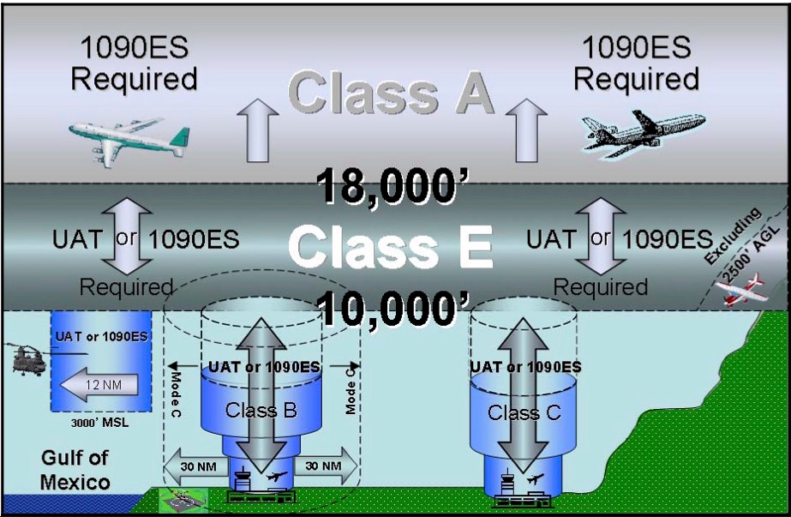
Are You Ready for ADS-B?
ADS-B has been on the radar (no pun intended) for many years now. The January 1, 2020 deadline has always seemed like a long way off, but as 2017 comes to a close we’re in fact getting down to crunch time.
There are many resources available for ADS-B regs, details, acronyms, etc., so we’ll just review the high points.
Many GA operators in less populated areas won’t be required to meet the ADS-B mandate, but the gotcha for BA operators is the Class E at or above 10,000’. Fly above this and you need at least ADS-B Out—either a Universal Access Transceiver (UAT) 970 or a 1090ES transponder. Then, above 18,000’ in Class A, ADS-B Out must be provided by a 1090ES transponder.
Although the mandate only requires ADS-B Out, there are so many benefits from also having ADS-B In—traffic and weather being the obvious ones—that it’s hard to imagine a scenario where a BA operator wouldn’t equip for both.
You’ll also need a WAAS-enabled ADS-B position source. That means you may have to do a GPS/FMS upgrade as well, and it may behoove you to explore a phased approach to minimize downtime.
It’s probably safe to say that a lot of folks expected the January 1, 2020 deadline to get extended when it was first announced; however, it appears the FAA is standing firm on the date. So if you’re counting on an extension, you may want to rethink your plan or you could be having a difficult conversation with the boss about why the airplane is grounded.
Also be mindful of the demand that’s being placed on avionics shops and technicians. That’s a unique skill set and shops could have a tough time meeting the spike in demand. If you haven’t done so, your best bet is to start talking to your avionics shop of choice now and ensure you’ll have a spot in line before the deadline hits.
If you’d like to get more in the details about ADS-B or if you have any questions, we recently hosted a webinar that shares all you need to know about. Click the link below to check it out.
The Ins and Outs of ADS – B Webinar
Additionally, here are some other good sources of ADS-B info:
ADS-B has been on the radar (no pun intended) for many years now. The January 1, 2020 deadline has always seemed like a long way off, but as 2017 comes to a close we’re in fact getting down to crunch time.
There are many resources available for ADS-B regs, details, acronyms, etc., so we’ll just review the high points.
Many GA operators in less populated areas won’t be required to meet the ADS-B mandate, but the gotcha for BA operators is the Class E at or above 10,000’. Fly above this and you need at least ADS-B Out—either a Universal Access Transceiver (UAT) 970 or a 1090ES transponder. Then, above 18,000’ in Class A, ADS-B Out must be provided by a 1090ES transponder.
Although the mandate only requires ADS-B Out, there are so many benefits from also having ADS-B In—traffic and weather being the obvious ones—that it’s hard to imagine a scenario where a BA operator wouldn’t equip for both.
You’ll also need a WAAS-enabled ADS-B position source. That means you may have to do a GPS/FMS upgrade as well, and it may behoove you to explore a phased approach to minimize downtime.
It’s probably safe to say that a lot of folks expected the January 1, 2020 deadline to get extended when it was first announced; however, it appears the FAA is standing firm on the date. So if you’re counting on an extension, you may want to rethink your plan or you could be having a difficult conversation with the boss about why the airplane is grounded.
Also be mindful of the demand that’s being placed on avionics shops and technicians. That’s a unique skill set and shops could have a tough time meeting the spike in demand. If you haven’t done so, your best bet is to start talking to your avionics shop of choice now and ensure you’ll have a spot in line before the deadline hits.
If you’d like to get more in the details about ADS-B or if you have any questions, we recently hosted a webinar that shares all you need to know about. Click the link below to check it out.
The Ins and Outs of ADS – B Webinar
Additionally, here are some other good sources of ADS-B info: